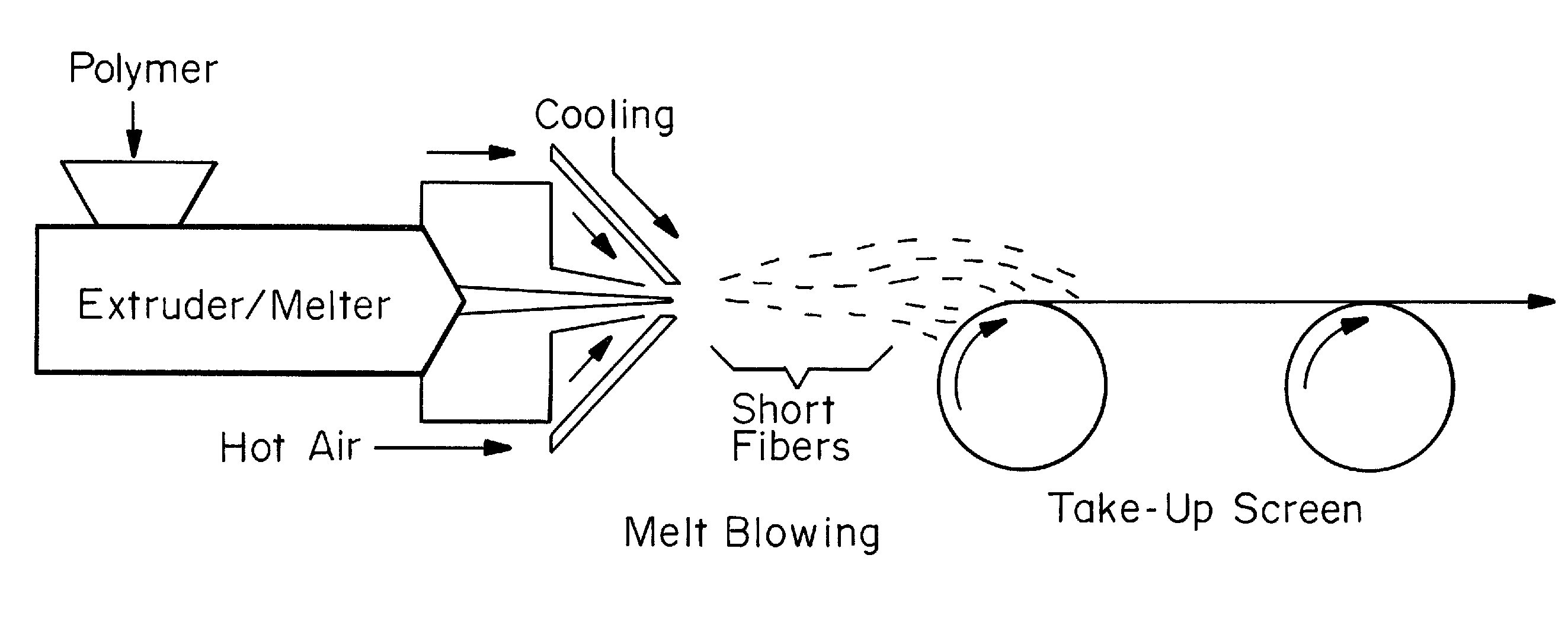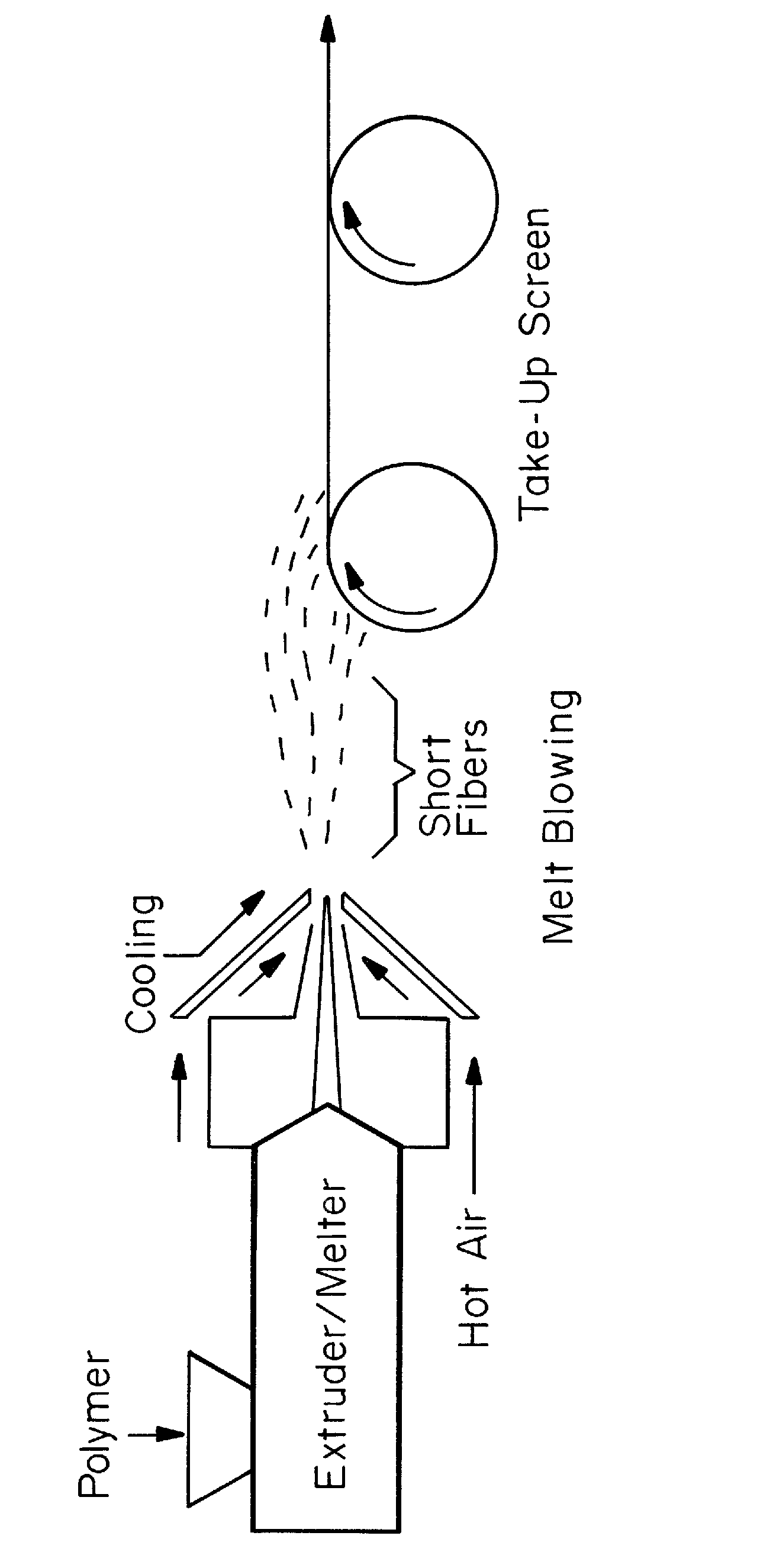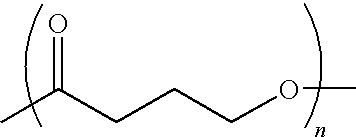Medical devices containing melt-blown non-wovens of poly-4-hydroxybutyrate and copolymers thereof
a technology of polyhydroxybutyrate and non-woven materials, which is applied in the field of polymer compositions, can solve the problems of inability to produce the polymer with a sufficiently high molecular weight that is necessary for most applications, and inability to meet the requirements of many surgical procedures and applications. , to achieve the effect of high toughness, low modulus and good cohesion of fibers
- Summary
- Abstract
- Description
- Claims
- Application Information
AI Technical Summary
Benefits of technology
Problems solved by technology
Method used
Image
Examples
example 1
Preparation of P4HB Non-Woven by Melt-Blowing
[0048]P4HB (Tepha, Inc., Lexington, Mass.) (Mw 150,000) was ground into small pieces (3 mm) using a Fritsch cutting mill (Pulversette 15, 10 mm bottom sieve) and dried under vacuum overnight to less than 0.01% (w / w) water. The equipment used consisted of a 6″ melt-blowing die fed by a 1″ single screw extruder. The die was configured with 120 holes of 0.018″ diameter. The die tip was set back 0.030″ from the face of the die and used a 0.030″ air gap. The processing parameters are shown in Table 1.
[0049]It was found that a melt temperature of about 400° F., and air temperature of 370° F., provided a good web of fibers. Once these conditions were established, the extruder screw speed (rpm) and collector position (DCD, die collector distance, in) were varied to produce several different non-woven configurations. These include a non-woven mixing larger and small fibers, with small interstitial spacing; a highly porous (interstitial spacing of ...
example 2
Preparation of P4HB Non-Woven by Melt-Blowing
[0054]Melt blown non-woven fabrics of P4HB were made as in example 1, but using pellets of higher Mw (400,000 daltons weight average molecular weight). The die was configured with 121 holes of 0.010″ diameter. The die tip was set back 0.060″ from the face of the die and used a 0.060″ air gap. The processing parameters are shown in Table 3. It was found that a melt temperature of about 230° C., and air temperature of 230° C. provided a good web of fibers. Once these conditions were established, the collector speed was varied to collect non-wovens of various thicknesses. The properties of several sample non-wovens are shown in Table 4.
[0055]
TABLE 3Processing parameters for the 6″ melt blowing line at TANDEC used to produceP4HB non-woven materials in Example 2.ExtruderAmbientDieAttenuation AirZone 1Zone 2Zone 3ConnectorSpeedAir TempZone 2Zone 3Zone 4Press.Press.Temp.DCDDeg C.Deg C.Deg C.Deg C.RPMDeg C.Deg C.Deg C.Deg C.PSIPSIDeg C.Mm144.7202...
PUM
| Property | Measurement | Unit |
|---|---|---|
| diameter | aaaaa | aaaaa |
| temperature | aaaaa | aaaaa |
| temperature | aaaaa | aaaaa |
Abstract
Description
Claims
Application Information
 Login to View More
Login to View More - R&D
- Intellectual Property
- Life Sciences
- Materials
- Tech Scout
- Unparalleled Data Quality
- Higher Quality Content
- 60% Fewer Hallucinations
Browse by: Latest US Patents, China's latest patents, Technical Efficacy Thesaurus, Application Domain, Technology Topic, Popular Technical Reports.
© 2025 PatSnap. All rights reserved.Legal|Privacy policy|Modern Slavery Act Transparency Statement|Sitemap|About US| Contact US: help@patsnap.com



